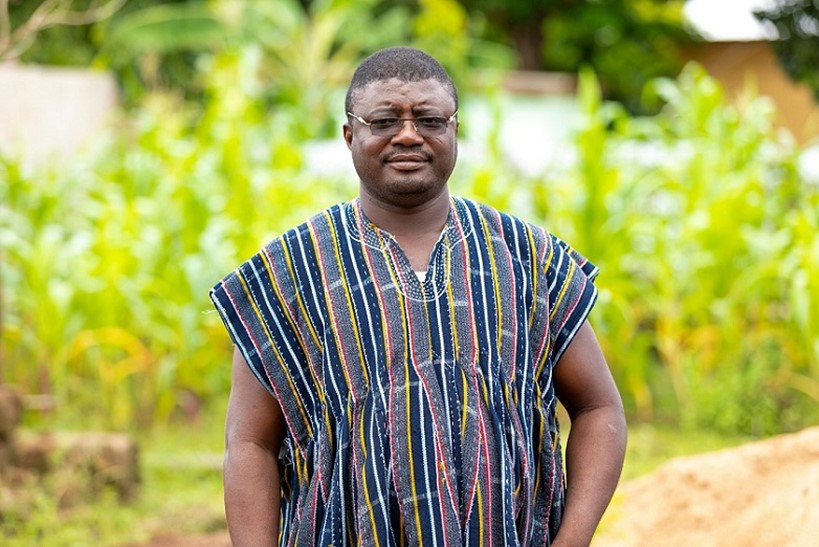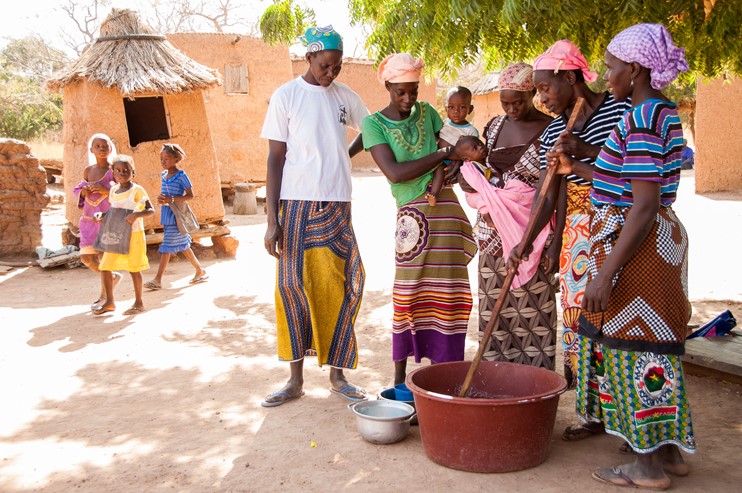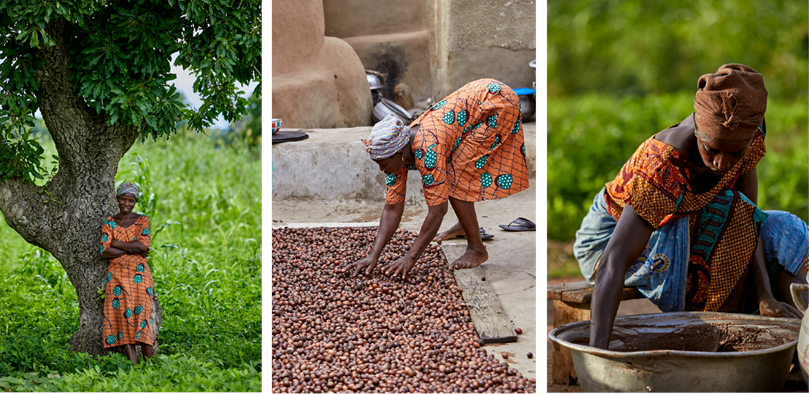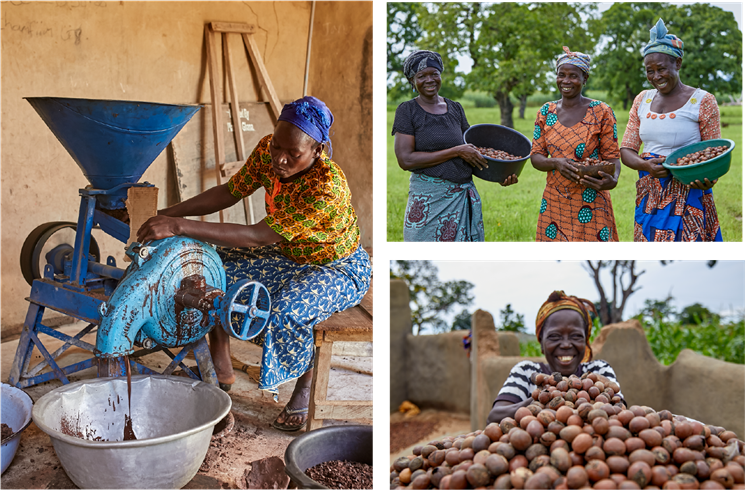
How is shea butter helping women's empowerment in African drylands?

How is shea butter helping women's empowerment in African drylands?
In this latest blog, Tree Aid’s Ghana Country Manager, Jonathan Naaba, explains how shea butter is empowering women farmers in African drylands.
You might be familiar with shea butter. From cosmetics to well-known chocolate bars, it’s a product that is present in the day-to-day lives of many people across the globe. But with over 90% of the world’s shea butter exports coming from West Africa, its line back to rural women across Africa’s drylands is often forgotten. Tree Aid, among other NGOs, is working to transform this— making the shea value chain a tool for advancing gender equality, and putting resources and incomes into the hands of the women who produce it.
From my time working for Tree Aid as Ghana Country Manager, I have seen the amazing benefits shea butter production can bring for women living in rural communities. My own life has been changed by the industry— my mother sent me to school with the money she made from harvesting shea. But how, exactly, is the shea value chain helping to address gender inequality, and how is it empowering the women who make it?
As part of the Daka River tree restoration projects in Ghana, below is a closer look at the shea value chain (the chain of activities needed to make shea butter) and its key role in supporting gender equality in the Sahel region of Africa.
Revolutionising the shea value chain

In rural Africa, shea is a lifeline out of extreme poverty. For many of the women who farm and produce shea butter, the income it brings can provide essential money to pay for things like food, health insurance and children’s school fees. But from planting the first shea trees to packaging the shea butter, the production chain is complex and full of challenges.
The lifecycle of the tree means it can take between 10-15 years for tree saplings to begin bearing fruit. Once this happens, shea nuts are harvested and the butter is produced by hand. This manual process can take days of hard and intense labour. Parts of the production chain are also time-sensitive; small windows of opportunity are presented for harvesting, storing and producing the best quality butter. If missed, entire batches can be ruined, and days of labour wasted.
To change this, Tree Aid’s projects in northern Ghana have been assisting communities by providing the right tools to speed up production, such as providing participants with crucial access to specialist machines. For women farmers, ditching the manual process means they can go from producing 1 bag of shea butter per week, to 10 bags a day.
Tree Aid also provides enterprise training and purpose-built warehouses for storing harvested nuts. This means that women can continue selling shea butter during the dry season when the tree production typically stops, which also helps them fetch higher prices for their produce.
This comprehensive approach ensures a truly transformative impact on the lives of women in rural communities.
Shea as a tool for challenging gender roles

In the region where our projects are based, shea farming is typically done by women. This is largely because of the effects of gender inequality— as we’ve seen, shea is difficult to produce and without the right equipment, can result in low gains for a lot of hard work. That’s why investing in the shea value chain is turning this on its head.
With the right tools and training, the women we work with have been able to boost their incomes. Because they have higher earnings, they are also finding new value and respect at home and in their communities. Women, for example, are now being consulted in key decision-making during village meetings. They’ve also found that they can contribute income to their family farms, resulting in better profitability and overall respect for the value of their work.
Shea butter and tackling the climate crisis

The climate crisis is closely linked to gender inequality—you can’t address one without first untangling the other. Why? Because in areas most affected by climate change, women are more likely to depend on trees for survival. This also means that women hold critical knowledge and talent when it comes to natural resource management. That’s why advocating for women’s empowerment is key to effective land restoration.
How does shea butter help? Through increasing women’s incomes and advocating for their leadership, we’ve seen a change in attitude towards the value of protecting trees in the region. And with a decline in deforestation in the Daka River area, land is slowly regreening, becoming more fertile and better adept at holding back the spread of the desert.
When I think back to the years my mother spent making shea butter, I know the value of her work has not been forgotten. It’s thanks to women like her that the power of shea butter is being placed in the hands of the women who produce it, and the land that they live on is being protected for the future.
Over the next few years, Tree Aid will be closely monitoring and evaluating the effects of the shea trade on women’s income and gender advancement. We look forward to seeing what the next steps will bring.